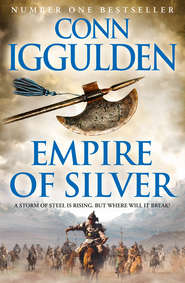По всем вопросам обращайтесь на: info@litportal.ru
(©) 2003-2024.
✖
The Double Dangerous Book for Boys
Настройки чтения
Размер шрифта
Высота строк
Поля
WILLOW
Not only are cricket bats, baskets, fences and chairs made from flexible willow, but its bark contains salicylic acid, which is better known as aspirin. It was the world’s first painkiller and anti-fever agent. For that alone, it would be a wonder – but also, see cricket bats. The two most common varieties are the crack willow (Salix fragilis), which has twigs that break with a crack sound, and the white willow (Salix alba), which has pale undersided leaves and more flexible twigs. Usually found near water.
Müller/McPhoto/Alamy Stock Photo; Inset. Florapix/Alamy Stock Photo
LONDON PLANE
Worth including here as it is found in every London park and places such as Berkeley Square, though few other places. It is not a native breed, but a hybrid of the Oriental plane (Platanus orientalis) and the American plane (Platanus occidentalis) – imported in the 16th and 17th centuries respectively. Distinctive speckled bark. Planted in huge numbers in the 19th century to help soak up pollution. Sometimes called the ‘lungs’ of London.
Mark Zytynski/Alamy Stock Photo; Inset. Manor Photography/Alamy Stock Photo
ROWAN
Sorbus aucuparia
Known to the Greeks and sacred to the druids, this ancient British tree hangs heavy with red berries when all else has gone to winter. The berries are inedible in large quantities to humans, but loved by birds. The trees have been associated with protection and magic for thousands of years. They were often planted near houses to keep witches away. One friend of ours has rowan trees on three sides of his house, but cannot prevent his aunties getting in through the front door.
Geoff Smith/Alamy Stock Photo; Inset. FLPA/Alamy Stock Photo
SCOTS PINE
Pinus sylvestris
Ancient pine with blue-green needles. Native to Scotland and found mainly in the Highlands. Adopted as the official tree of Scotland in 2014, they can grow to 120ft tall (36m). They are home to red squirrels, wildcats, pine martens, owls and capercaillies – the largest member of the grouse family. As with oaks, each mature tree is a village.
Arterra Picture Library/Alamy Stock Photo; Inset. Rootstock/Shutterstock.com
HORNBEAM
Carpinus betulus
An ancient hardwood tree, native to south-east England. The name means ‘hard tree’. Looks similar to beech, as the bark is smooth and grey, though hornbeam leaves are double-toothed, spikier, with much more pronounced ridges. Grows surprisingly quickly for such a hard wood, and so densely it also makes a good hedge, though unlike a beech hedge, it loses all leaves in winter.
hornbeam
Mark Zytynski/Alamy Stock Photo
hornbeam leaves
Nic Murray/Alamy Stock Photo
beech (left), hornbeam (right)
Courtesy of the author
HANGING TOOLS ON A WALL (#ulink_9cbec124-996d-52d6-8784-05909cb119bf)
Courtesy of the author
One day, with a little luck, you’ll have a workshop to call your own. It might be a shed, with a workbench, a vice and a range of tools, or the wall of a garage perhaps. You’ll use the space for little jobs – it is amazing how vital a single vice can be. You’ll plane a pine shelf in there, or rewire a plug, or repair the base of a door where it went rotten and had to be cut out. Each job will require its own tools and slowly you’ll build up a collection. You’ll get a set of chisels and find you use the half-inch one for almost everything. You’ll buy a massive hammer and discover it’s too big for knocking in small tacks. Piece by piece, you will put together a set capable of handling most jobs.
Here is a list of the tools you’d hope to find in any workshop set: tenon saw, coping saw, jigsaw (powered), rip saw, hacksaw; inch, half-inch and quarter-inch chisels; sharpening stone and sharpening jig to hold the chisel steady; G-clamps in varying sizes, sash clamps, grip clamps that can be fastened with a pumping action; sander (powered), as well as a box of sandpaper in various grades; two or three Phillips or cross-head screwdrivers; two or three flat-bladed screwdrivers in different sizes; a wooden mallet and a couple of different-size hammers up to 23oz; a wood and steel try square, a metal ruler, spirit levels – short and long; needle-nosed and blunt-nosed pliers; pincers, a punch; marking gauge, planes long and short; drill (powered) and various drill bits; box of miscellaneous screws; carpenter’s pencils for marking wood; kneepads to wear while kneeling on the floor. Also, a socket set will be useful for a thousand jobs. That’s a decent start. Altogether, it costs a fortune, but, of course, they are built up in single purchases over many years. High-quality tools are also often inherited. They should be kept oiled, clean and in the open, so they’re not found rusted and ruined years later.
Warning: If a man buys a pair of first-class boots, he will pay more than for the cheapest ones, but be warm and secure for ten or twenty years. The man who bought the cheapest boots will have to replace them as they break apart – over and over and over. In the end, he will spend more on bad boots than the first spent on good ones – and he’ll have wet feet. Good boots are an investment – and so are good tools. There are very cheap tools out there, made of such poor metal alloys that they can bend or even snap. This is an area – to be delicate – where better results can be found when buying an adjustable spanner made in England in the 1900s rather than some modern ones. The concept of cheap, replaceable items is an invention of the second half of the 20th century. Bear that in mind. Good-quality tools can be found in car-boot sales or auctions for very little. If you need new, go for better-quality brands like Stanley, Crown, Vaughan or Lie-Nielsen. The tools will cost more than the cheapest possible alternatives, but they will last a lifetime. As with the boots, that is cheaper in the end.
Some of these tools come in their own plastic boxes. These can be fussy and annoying to open. The best system of storage is still to hang the tools on a flat wall in plain sight and arm’s reach. There must be hundreds of different ways to do it. In America, for example, boards with metal pins are very popular, as well as being easy to attach and set up. There is nothing wrong with that. This chapter aims to give some ideas about hanging tools using bits of pine and brass screws. Making the holders does, of course, involve sharp tools like chisels, so this might be a job for dads. Each piece took a while to shape and hang, but the results look pretty good, and frankly there is something satisfying about seeing them in place. (We use the word ‘satisfying’ a lot in this book, because it is a feeling not of joy or excitement, but of a craft learned or a job well done. That is worth something.)
All of the holders are attached to a sheet of five-ply. It’s cheap and easy to shape. We bought a large sheet and sawed it into two pieces. Those were attached to a brick wall. (Drill holes with a power drill and a masonry bit. Insert plastic Rawlplug. One screw in each corner will hold immense weight. In this case, we also used white plastic cuffs on the screws for the look of the thing.)
THE SAWS
Four of the five saws in the picture (here (#ulink_9f93bb64-02fb-5631-8f6c-c16c30b3f593)) are held with some sort of oval shape attached to the wall with a single screw. (Note that all of these screws were ‘countersunk’, that is, the original holes were drilled, then a new drill bit was swapped in to widen the top. That meant the screw could sit flush, and frankly it looks neater. It’s time-consuming to keep swapping the drill bits, but we think it’s worth it.)
The ovals had to be cut to fit the saw. We did this quickly and crudely. Laying the saw on a pine plank, we put a pencil through the handle onto the wood and drew the oval. As it was a curved shape, we used an electric jigsaw to cut out the oval – and an electric sander held upside down in a vice to sand the edges.
Please note that a jigsaw is one of the most dangerous tools in a workshop. You’re cutting a line in a sheet of wood, but you often can’t see beneath it. You’ll need clamps to hold the wood steady – and you need to be sure you don’t send one of your fingers flying into the air.
Once the oval was formed, we put a small pilot hole through into the plywood sheet behind. We then countersunk the hole and screwed in a brass screw. (Get one colour of screw for this. It looks better.)
Some of the saws were left hanging down, but for the look of it and to save space, we wanted to keep this one horizontal. To do that, we cut a rectangle of pine. Two countersunk holes straight into the plywood would hold it in place. The only extra work was the trench for the saw blade. We held the piece in a vice and made two shallow cuts with a tenon saw, then chiselled it out. Strictly speaking, it would have been fine without that trench, but it’s … satisfying to take time and get it right.
THE MALLET
To hold the wooden mallet in place, we used three pieces of pine. All these pieces were made using the same cheap planking. For each one, we’d just cut whatever we needed, usually with a tenon saw or the jigsaw.
In this case, we sawed off two short pieces, which then had countersunk pilot holes drilled in them. Pine can snap really easily along its grain, especially near the edge. In many ways it’s a terrible wood, but it’s cheap and it does work.
The main bar was just a simple rectangle, with a trench cut in it for the hammer handle. We placed the handle up against the piece of pine and drew a pencil line on it to show where to saw, then chiselled out the trench. Sandpaper was always on hand to smooth rough edges – another thing that is a lot easier with pine than, say, oak.
We attached the two top pieces to the main bar before putting the holder onto the wall. Glue would work, of course, though screws are faster than waiting for glue to set. Held by single screws, they can obviously still move. That’s fine. If the screw is tightened, they’ll remain in place without needing adjustment.
THE TRY SQUARES
These tools – used for measuring and scribing angles – are held by two pieces. The first is a narrow bar of pine, held in place with two screws. In the centre, we cut and shaped a little tab of pine. On a single screw, the idea was that it could be moved open and shut if necessary, to remove the tool. That worked surprisingly well, though we had to take great care not to snap the thing along its length. To make it, we cut a narrow strip of pine, sawed it across to make a short piece, then sanded the edge to a curve by holding it against an electric sander.
THE SPIRIT LEVEL
We used a similar set-up to hold one of the spirit levels. For this, though, we decided the central tab shouldn’t move. We used two pieces to build out a ‘shelf’ to the right width to hold the level, then attached the final tab using a shallow trench chiselled out, so that it couldn’t turn. It’s probably a bit fussy, but it’s an old spirit level and we didn’t want it to fall off just because someone slammed a door.
COPING SAWS
Coping saws are useful. They cut around corners and are excellent for delicate work such as dovetail joints. (The narrow blades do snap, though, so keep spares. There’s nothing worse than having your last blade snap on a Sunday afternoon, with no shops open.)
For these, we cut a piece of pine as you can see in the cross-section image. Hold in a vice and make two saw cuts that meet. Leave enough room for a couple of screws to attach it to the wall and you have a nice wooden lip.
THE HAMMER AND RIP SAW
The big 23oz hammer and the rip saw are held with pegs. For this we went to a DIY store and bought pine dowel, then sawed it into pieces. We needed a much bigger drill bit to put the holes in the plywood sheet. We held the saw to the wall and marked the positions where the pegs would go – using a spirit level to make sure the saw hung straight down as well. With a little sanding and shaping, we glued the dowel pegs in place, tapping them in gently with the wooden mallet – and then hitting them really hard when ‘gently’ had no effect whatsoever.











